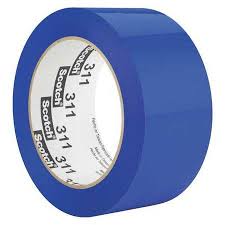
Richard Drew's "Adhesive Tape," patented May 27, 1930.Įventually, in 1925, he found a winning formula: crepe paper backed with cabinetmaker’s glue mixed with glycerin. A company executive, William McKnight, told Drew to stop messing around and get back to his regular job, which he did, but Drew kept doing tape experiments on his own time. He experimented with everything from vegetable oil to natural tree gums. He spent the next two years developing a tape that was sticky yet easy to remove. Drew walked into an auto body shop one day and heard the " choicest profanity I'd ever known" coming from frustrated workers. But that was difficult to get off, and often resulted in a sticky mess. Workers needed to mask off part of the car while they painted the other, and often used glued-on newspaper or butcher paper for the job. In Drew’s early days at the company he would deliver sandpaper samples to auto manufacturers, who used it for the painting process.


That was another household must-have: masking tape. Transparent tape was not Drew’s first ingenious invention. Masking tape simplified the process of painting two-toned cars. He took a correspondence course in machine design, and was soon hired as a lab tech by the Minnesota Mining and Manufacturing Company, which was then in the business of manufacturing sandpaper. But he only lasted 18 months in the engineering program. Every year its manufacturer, 3M, sells enough of it to circle Earth 165 times.īorn in Saint Paul, Minnesota on June 22, 1899, Drew spent his youth playing banjo in dance halls, eventually earning enough money to attend the University of Minnesota.

That product is Scotch transparent tape, the tape that looks matte on the roll but turns invisible when you smooth it with your finger. Yet the banjo-playing college dropout, born 120 years ago this Saturday, would go on to spend some four decades working at one of America’s largest multinationals, and would invent one of the best-selling and most iconic household products in history. The invention of Scotch Tape, which can now be found in almost every home, resulted in Drew being inducted into the National Inventors Hall of Fame.Richard Drew never wanted an office job. Over the years, several manufacturers have started making transparent adhesive tape, however, many people still tend to call it Scotch Tape. Nevertheless, to date, one can still find the green plaid on Scotch labels. However, he was jettisoned in the early 1970s. The mascot started wearing red tartan and Wallace Hunting green plaid. It was later marketed as Scotch Masking Tape.Īround the 1950s, the company introduced their mascot, “Scotty McTape”, who was declared a member of the Clan Wallace - the clan that William Wallace was from. It adhered well to cars and came off easily without taking paint away. He went on to invent masking tape made out of crêpe paper, cabinetmaker’s glue, and glycerin. This inspired Drew to come up with a long-term and efficient solution.

However, when the newspapers were removed, residue remained and would rip the paint off when peeled off. At that time, surgical adhesive tapes or library glues were used to hold newspapers on cars when painting. When he used to deliver sandpaper samples to auto body shops, he observed the inconvenience that car painters experienced when they had to paint two-tone color cars. In the early 1920s, Richard Drew worked at the Minnesota Mining and Manufacturing Company, which made sandpaper at the time.


 0 kommentar(er)
0 kommentar(er)
